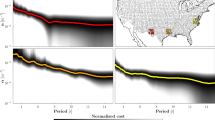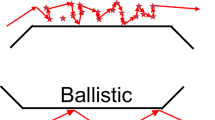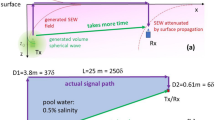Abstract
EXPERIMENTS on the propagation of high-frequency radio waves have recently been made by Warren and Hagg1, who have published a photographic record showing the relation between the wave frequency and the time of propagation over the 5,300-km. path between Slough and Ottawa. From this record the authors conclude that, in spite of the great distance, the ‘high-angle’ (Pedersen) rays were propagated by a single hop having a reflexion point midway between the terminal points.
This is a preview of subscription content, access via your institution
Access options
Subscribe to this journal
Receive 51 print issues and online access
$199.00 per year
only $3.90 per issue
Buy this article
- Purchase on Springer Link
- Instant access to full article PDF
Prices may be subject to local taxes which are calculated during checkout
Similar content being viewed by others
References
Warren, E., and Hagg, E. L., Nature, 181, 34 (1958).
Appleton, E. V., and Beynon, W. J. G., Proc. Phys. Soc., 52, 518 (1940).
Author information
Authors and Affiliations
Rights and permissions
About this article
Cite this article
KIFT, F. Single-Hop Propagation of Radio Waves to a Distance of 5,300 km.. Nature 181, 1459–1460 (1958). https://doi.org/10.1038/1811459a0
Issue Date:
DOI: https://doi.org/10.1038/1811459a0
This article is cited by
-
High-Frequency, High-Power, Pulse Signals from an Australian Transmitter
Nature (1962)
-
A High-Frequency Aerial Array with Surface Wave Launching to Attain Low Angles of Propagation
Nature (1962)
-
Increase in Maximum Usable Frequency for Two-hop Transatlantic Propagation due to Horizontal Gradients
Nature (1962)
Comments
By submitting a comment you agree to abide by our Terms and Community Guidelines. If you find something abusive or that does not comply with our terms or guidelines please flag it as inappropriate.



